Supply Chains
SC1 – Smart Connected Shared Mobility for Urban Area

Development of smart edge- and cloud-based building bricks for autonomous mobility interconnected with secure communication architectures and systems.
Objectives: 1,2,6
Innovation
- Secure Edge/Cloud data utilization
- Event based fleet learning
- Smart city routing
Partner: VIF, AIT, AVL, OTH, TUGRAZ, TTTAUTO, IFAG, VGTU
Demonstrators
SCD 1.1: Lessons-learned based (critical scenario) update of ADAS/AD Controller (lead: AVL)
SCD 1.2: Robo-taxi (lead: ViF)
SCD 1.3: Virtual city routing (lead: OTH)
SC2 – EV 2030 by AI inside
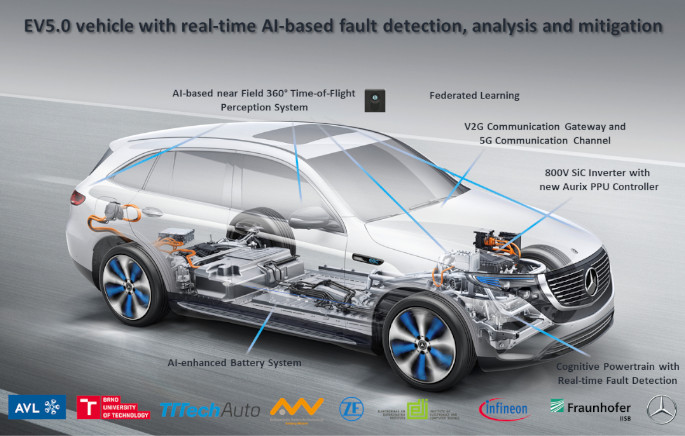
Builds an electrical passenger car (EV) to demonstrate AI based fault- detection, analysis, mitigation for the powertrain in real time operation.
Objectives: 1,2,3,4,5
Innovation
- AI based fault- detection, analysis, mitigation for the powertrain in real time operation
- System architecture with reduced redundancy
Partners: MBAG, AVL, BUT, EDI, FHG, IFAG, IFIN, OTH, TTTAuto, ZF
Demonstrators:
SCD 2.1: EV5.0 vehicle with real-time AI-based fault detection, analysis and mitigation (lead: MBAG)
SC3 – Functional integrated highly automated L3 driving
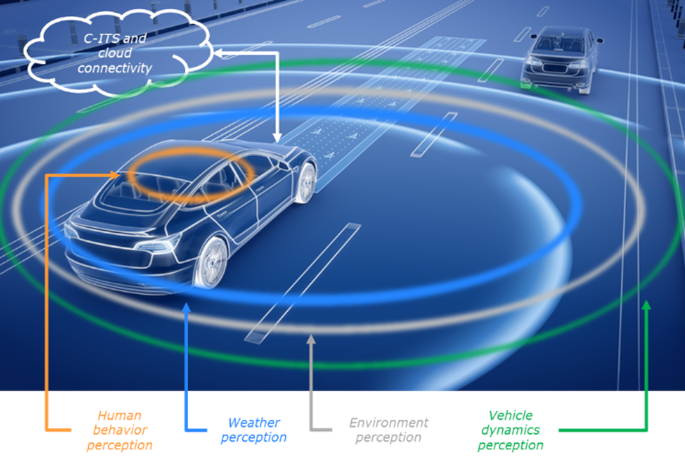
Is focused on coexisting-human operated vehicles and autonomous systems, and the dynamic interaction between them.
Objectives: 2,3,5
Innovation:
- Human feedback loop “Behavioral Planning”
- Multi-Modal mobility
- Weather-in-the-loop
Partners: I&M, IFAG, IFAT, IFI, VEM, WV, SAT, POLITO, UNITO, UNIMORE, BYLO, FEDDZ
Demonstrators:
SCD 3.1: Demo vehicle to demonstrate L3 automated with a Driver’s Monitoring System (lead: UNIMORE)
SCD 3.2: L1e vehicle with natively integrated telematics (lead: FEDDZ)
SC4 – Robust Propulsion System for Shared Connected Mobility

Research and demonstrate a powertrain for xEVs including inverter with AI - based health assessment. AI techniques will be used for AI-based functionalities for the battery management as well as detection of foreign objects by wireless chargers.
Objectives: 1,2,3
Innovation:
- AI in monitor
- AI for control
- GaN for Inverter
Partners: ZF, BUT, FHG (IISB), HSO, IFAG, IFAT, IFI, INNAT, MBAG, TUD, TUDO, TUWIEN
Demonstrators:
SCD 4.1: AI controlled redundant powertrain (lead: ZF)
SCD 4.2: AI accelerated powertrain control (lead: IFAG)
SCD 4.3: Intelligent battery by AI (lead: FHG)
SCD 4.4: Safety power management IC (lead: IFI) SCD 4.5: Wireless Charging Enhanced by AI (lead: TUD)
SC5 – Connectivity and Cognitive Communication

Research and demonstration on secure external communication, with high data rates (5G) and bandwidth. The cloud fusion of edge perception results into the digital twin as well as fast and reliable wireless communication channels based on 28 GHz mmW technology
Objectives: 2,6
Innovation:
- Communication System Architecture
- Robust low latency technology
- AI-enabling communication tech.
Partners: TTTAUTO, AIT, IFAG, NXP-NL, NXP-DE, IMA, FHG (HHI), TUD
Demonstrators:
SCD 5.1: Proof-of-concept communication platform (lead: TTTAuto)
SCD 5.2: Proof-of-concept demonstrator novel wireless data transmission (edge/cloud) (lead: IFAG)
SC6 – AI-Enabled Perception and Sensor Fusion Platforms
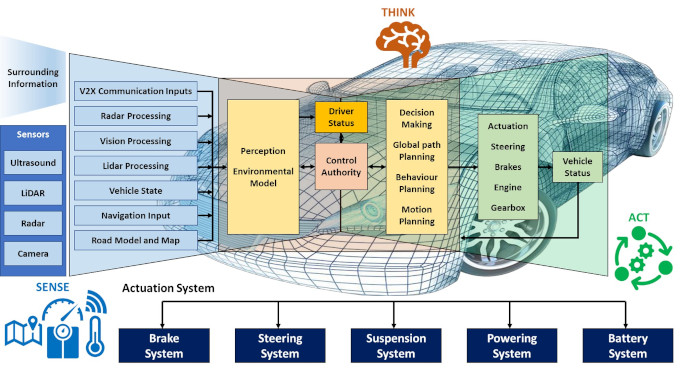
Research and demonstration on AI based perception and sensor fusion, new scalable AI-enabled platforms for autonomous mobility interconnected with secure communication architectures and systems.
Objectives: 1,2,3,4,5,6
Innovation:
- Sensor network fusion
- AI enabled perception
Partners: SINTEF, BUT, EDI, IFAG, IFAT, IFI, IFIN, IMA, IMEC, INNAT, NXPN, NXPDE, NXT, PAXSTER, TGLV, TUDELFT
Demonstrators:
SCD 6.1: Perception and vehicle intelligence platform (lead: NXPN)
SCD 6.2: Neuromorphic sensor fusion (lead: IMEC)
SCD 6.3: Affordable AI-enabled perception (lead: SINTEF)
SCD 6.4: Localisation and 3D mapping (lead: BUT)
SCD 6.5: 3D Time of Flight with Aurix PPU (lead: IFAG)
SC7 – AI-Based Methods, Simulation and Virtualization
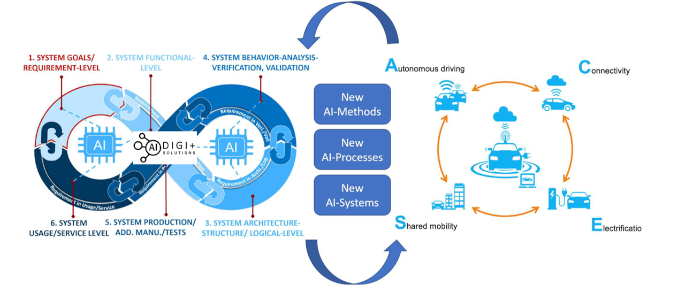
Research and demonstration for methods, tools and processes for a trustable AI-based connected shared mobility with focus of trustworthiness, simulation and virtualization.
Objectives: 3, 5, 6
Innovation:
- Automated cloud based learning and scenario generation
- Standardized data exchange for digital twins
Partners: AIDG, AIT, AVL, DIGITH, TTTAUTO, TUG-IST
Demonstrators:
SCD 7.1: Enriched virtual models based on standardized real-world data (lead: AVL)
SCD 7.2: Virtualized time and latency critical AI processes on the in-car computing platform (lead: TTTech)
SCD 7.3: AI based simulation and virtualization for multimodal mobility for virtual Smart Cities (lead: AIDG)
SC8 – Impact Green Deal, Standardization, Certification, Ethical Aspects
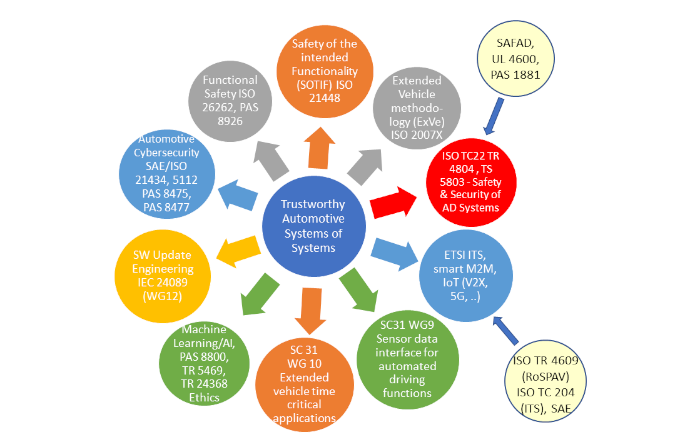
Implementing Europe’s vision of climate neutrality by 2050 for the automotive and the semi-conductor sector. Furthermore it makes sure that the developments within AI4CSM are conform with current and upcoming standards as well as to support their activates in driving new AI related knowledge into the standards.
Objectives: 1, 2, 3, 4, 5, 6
Innovation:
- As of SC1 to SC7
- Green Deal
Partners: AIT, IFAG, I&M, MBAG, TTTAUTO, IEDMS, SINTEF, VIF, TUD, TG
Demonstrators:
SCD 8.1: Green Deal (AIT & TUD, all)
SCD 8.2: Standards (AIT, all)
Dissemination
AI4CSM Project Presentation
AI4CSM Leaflet
AI4CSM SC1@EFECS
AI4CSM SC2@EFECS
AI4CSM SC8@EFECS
AI4CSM ViF@EFECS
AI4CSM Poster
Related Projects







